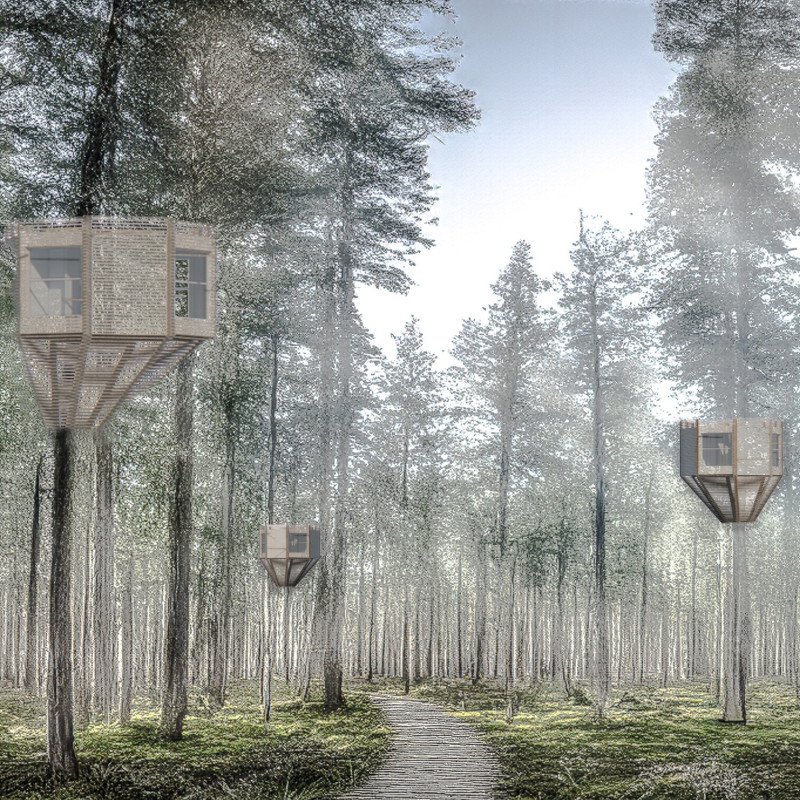5 key facts about this project
At its core, the project is designed to facilitate [insert specific function, e.g., multipurpose community spaces, educational facilities, or residential living] by providing a structured yet adaptive environment. The planners have taken into account the dynamic nature of modern life, resulting in spaces that can evolve with their occupants' needs. Strategic spatial organization has ensured that transitions between different areas are seamless, promoting an intuitive flow throughout the structure.
One of the distinctive characteristics of this architectural design is its careful material selection. The use of concrete not only provides structural integrity but also delivers a modern aesthetic that aligns with the overall design philosophy. Complementing this, large expanses of glass offer transparency, allowing natural light to penetrate deep into the building. The incorporation of wood, such as oak or cedar, introduces warmth and texture, enhancing the inviting atmosphere of the interiors.
The project incorporates elements such as [mention unique features like green roofs, outdoor terraces, or communal spaces] that encourage interaction among users. These spaces are designed not just for functionality but also to foster social connections, thereby enriching the community experience. Furthermore, the integration of local materials, like brick, reflects the architectural traditions of the region, grounding the project in its geographical and cultural landscape.
A notable design approach in this project is its commitment to sustainability. The architects have included various eco-friendly features, such as [provide examples like rainwater harvesting systems, solar panels, or energy-efficient systems] that contribute to reduced environmental impact. Such initiatives demonstrate a proactive stance towards responsible architecture and the need for designs that can sustain future generations.
The architectural elevations reveal a careful orchestration of forms that play with light and shadow, providing interest to the otherwise straightforward geometry. By focusing on the scaling of volumes, the design creates a sense of harmony and balance, enhancing the overall user experience. The meticulous details throughout the project, such as thoughtfully designed window placements and overhangs, facilitate natural ventilation, further emphasizing the project's sustainable objectives.
Throughout the design process, the integration of technology has been significant. Smart design strategies have aided in optimizing energy efficiency, ensuring that the building operates harmoniously with its environment. By employing modern technologies, the project not only enhances user comfort but also positions itself as a model of contemporary architectural practice.
In terms of architectural ideas, the project stands as a testament to the belief that good design can elevate the quality of life for its inhabitants. By prioritizing both individual comfort and community well-being, the project exemplifies how architecture can play a crucial role in shaping human experiences.
Visitors are encouraged to immerse themselves in the detailed intricacies of this architectural project. By exploring the architectural plans and sections, readers gain deeper insights into the thought processes behind the design and how these elements come together to create a cohesive result. This project is emblematic of contemporary architectural practice, where the focus is not merely on aesthetics but on fostering environments that enrich lives and respect the natural world.


























